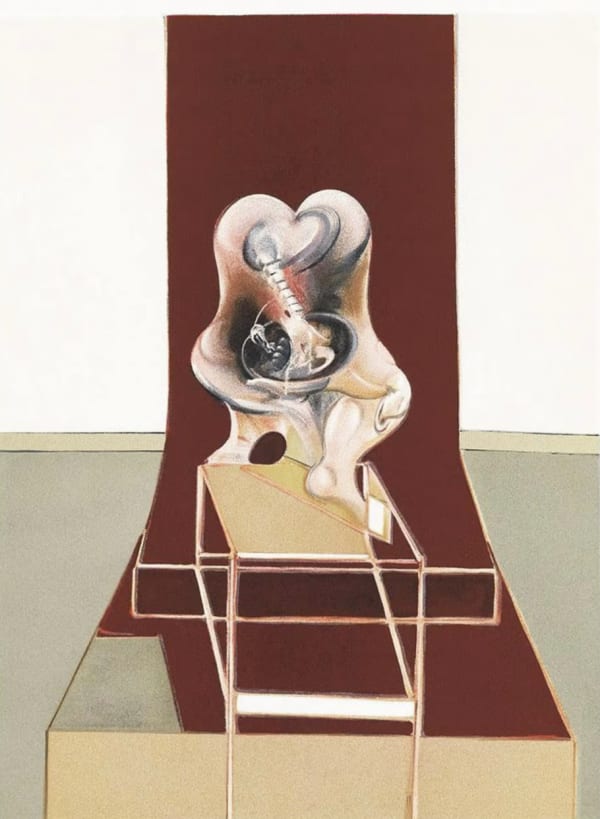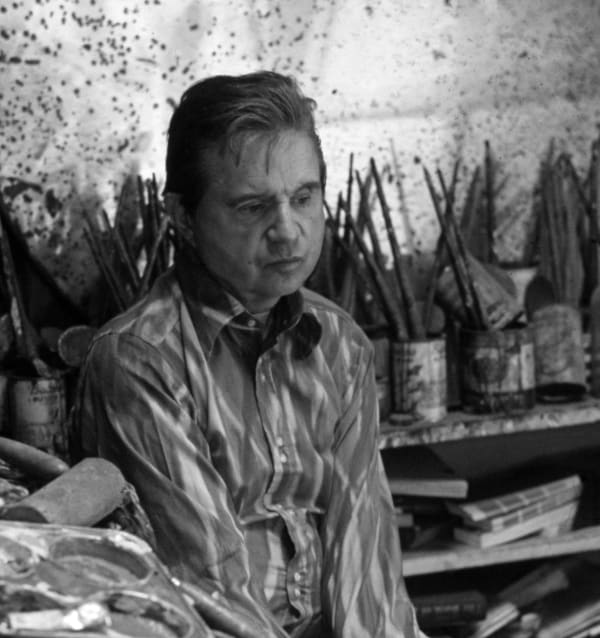-
 Study of the Human Body after Ingres (1982), 1984Lithograph in colours on arches, edition of 180, 62 x 46.1 cm©The Estate of Francis Bacon
Study of the Human Body after Ingres (1982), 1984Lithograph in colours on arches, edition of 180, 62 x 46.1 cm©The Estate of Francis Bacon -
The job of the artist is always to deepen the mystery.
-Francis BaconFor Bacon, Ingres represented both perfection and constraint, the very qualities he sought to undo. Where Ingres painted the human form as a vessel of grace and order, Bacon saw it as fragile, unstable, and subject to the violence of existence. His Study of a Human Body after Ingres (1984) can be read as both homage and defiance: an acknowledgement of Ingres’s mastery and a rebellion against his idealism.
Bacon once said that he wanted to “distort the thing far beyond the appearance, but in the distortion bring it back to a recording of the appearance.” This principle is at the heart of his engagement with Ingres. By pulling apart the precision of the classical figure, Bacon exposed something closer to lived reality, flesh as fallible, the body as a site of anxiety and decay.



